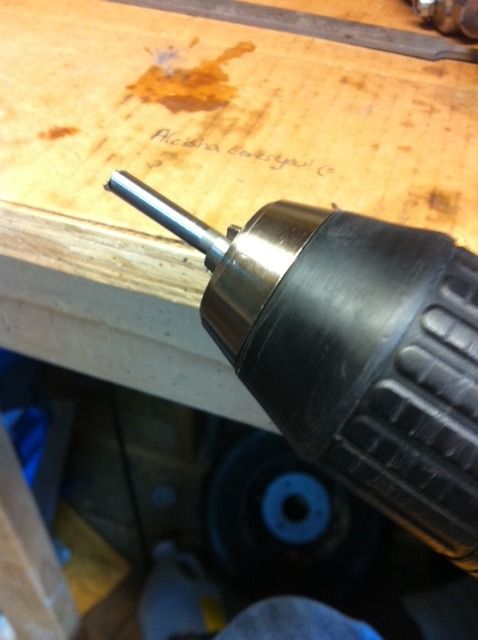semi_problomatic
New member
I know many people already know how to do this, but starting out I always heard "make a slave pin" with no directions on how to do it. I even used the plastic shaft of a q-tip in a pinch. This is really easy and a big help on putting guns back together. If it's yours and you're going to be taking it apart a lot, might as well have one that last. This is an easy way I've found to do it.
Buy some round bar stock in the closest diameter to your pins. I was working on a handi rifle so I got 3/16.
Sand paper. I had some 400, 600, and 1000 grit
Flat file. I used a 1"x12"
Electric drill
Vise (not really needed, but handy)
Calipers
Cutting tool. I used an angle grinder with a cutting blade on it, a dremel would've worked a lot better I'd imagine.
So I put the bar stock in a vise and cut off about 3"

Then I chucked that into my trusty electric drill and began to spin it with a file down from .185" to .182" I needed it to be .181"

Then I spun it while using the file to bevel the end.

Spin it in sand paper to smooth it out and get to the final desired diameter.


Then I flipped it over, cut it to the desired length, chamfered and smoothed the other end and blued it just to try and keep it from rusting.

So thats my quick how to make a slave pin guide.
Buy some round bar stock in the closest diameter to your pins. I was working on a handi rifle so I got 3/16.
Sand paper. I had some 400, 600, and 1000 grit
Flat file. I used a 1"x12"
Electric drill
Vise (not really needed, but handy)
Calipers
Cutting tool. I used an angle grinder with a cutting blade on it, a dremel would've worked a lot better I'd imagine.
So I put the bar stock in a vise and cut off about 3"

Then I chucked that into my trusty electric drill and began to spin it with a file down from .185" to .182" I needed it to be .181"

Then I spun it while using the file to bevel the end.

Spin it in sand paper to smooth it out and get to the final desired diameter.


Then I flipped it over, cut it to the desired length, chamfered and smoothed the other end and blued it just to try and keep it from rusting.

So thats my quick how to make a slave pin guide.
